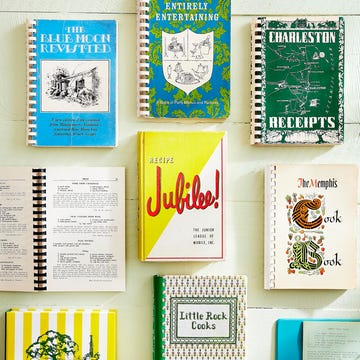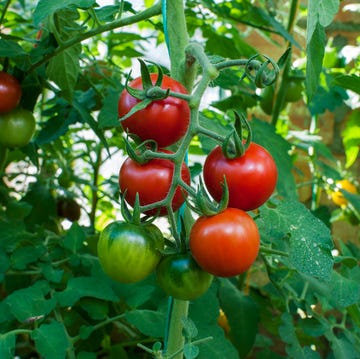1Pabst Brewery in Milwaukee
 Heritage Images//Getty Images
Heritage Images//Getty ImagesYep, that Pabst, of Pabst Blue Ribbon fame. The Pabst Brewing Company was first founded in Milwaukee, Wisconsin, in 1844, and their impressive brewing complex was one of the company's flagship locations, but it's no longer in operation today. This photo was reportedly taken sometime between 1890 and 1901.
2Brewery School Field Trip
 Library of Congress//Getty Images
Library of Congress//Getty ImagesObserving the intricate machinery and being taken through the process of brewing was a great educational opportunity to show kids chemistry in action. You just had to make sure everyone kept their hands to themselves!
Advertisement - Continue Reading Below
3Anheuser-Busch Brewery in St. Louis
 Bettmann//Getty Images
Bettmann//Getty ImagesAnheuser-Busch is another classic American brewing company that has been around a long time, first opening in 1852. You've probably had at least one Anheuser-Busch-owned beer since their parent company, AB InBev, owns brands like Budweiser, Beck's, and Stella Artois.
4Customers of Old Heidelberg Brewery, circa 1900
 Keystone-France//Getty Images
Keystone-France//Getty ImagesCheers! This group is gathered in Chicago's Old Heidelberg Brewery, which opened at the turn of the 19th century. America produces a huge range of different beers nowadays, but back then lagers were by far the most popular and most produced style of beer. Though there are plenty of unique ales—like amber ale and cream ale—which were created in the States as well.
Advertisement - Continue Reading Below
5Railside Malting Plant
 Erling Larson//Getty Images
Erling Larson//Getty ImagesSnapped sometime in the mid-20th century, this malting plant would process grain into malt, which would then be brewed into beer or whiskey. This photo was taken in Minnesota, and it's thought that this is the Fleischmann Malting Company.
6NYC Brewery Interior
 Keystone-France//Getty Images
Keystone-France//Getty ImagesThis huge machine is only one part of the process, and is likely where mashed malt was separated from an extract known as wort, which was boiled again with hops or other flavorings. The seven steps of brewing beer are malting, milling, mashing, lautering, boiling, fermenting, conditioning, filtering, and packaging.
Advertisement - Continue Reading Below
7Bottling Beer at a Chicago Brewery
 Chicago History Museum//Getty Images
Chicago History Museum//Getty ImagesThese workers are packaging freshly-made beer in glass bottles to be sent off. This photo was snapped in 1909 at Siebel's Brewing Academy in Chicago.
8Removing Beer Vats During Prohibition
 Bettmann//Getty Images
Bettmann//Getty ImagesDuring the Prohibition Era, which began when the 18th Amendment was ratified in 1920 and lasted until 1933, all breweries had to cease production of beer. These workers are rolling huge beer vats out of a Washington D.C. brewery, which reportedly started making ice cream in its facilities. Other products like non-alcoholic "near beer" and soft drinks were created by breweries to try and stave off bankruptcy during Prohibition.
Advertisement - Continue Reading Below
9Busted Prohibition-Era Brewery
 Historical//Getty Images
Historical//Getty ImagesHere we see Detroit police officers inspecting an underground brewery thought to be operating illegally during Prohibition. Beer became more difficult to produce secretly due to the bulky nature of some of its equipment and packaging. Companies turned to distilling spirits like moonshine and rum which could be transported more compactly.
10Driver Outside Christian Heurich Brewing Co.
 Buyenlarge//Getty Images
Buyenlarge//Getty ImagesThis photo was taken in Washington D.C. around 1932. This was almost at the end of Prohibition, so this massive brewery, part of the Christian Heurich Brewing Co., would have been making little more than ice at the time.
Advertisement - Continue Reading Below
11Cleaning a Long-Unused Beer Tank
 Keystone-France//Getty Images
Keystone-France//Getty ImagesThese cleaners are preparing a neglected beer tank toward the end of Prohibition. It was repealed in several acts including the Volstead Act and Cullen-Harrison-Act, and it was eventually repealed in full by the 21st Amendment.
12Brewmaster at Work
 Bettmann//Getty Images
Bettmann//Getty ImagesA brewmaster for the Eastside Brewery in Los Angeles is cleaning his equipment in anticipation of Prohibition's repeal. Before Prohibition's full reversal, the Cullen-Harrison act limited the alcohol content of beer to 3.2%, so this master had the job of crafting a good-tasting brew while limiting the ABV.
Advertisement - Continue Reading Below
13So Long, Prohibition!
 Bettmann//Getty Images
Bettmann//Getty ImagesCalifornia brewery workers cheers to the end of Prohibition. Unfortunately, many smaller breweries closed down during this period, but many new breweries would soon be established in the coming years.
14Big Ole Beer Barrels
 Bettmann//Getty Images
Bettmann//Getty ImagesTaken in 1949, this is the interior of Jacob Ruppert Brewery, which operated out of 92nd Street and 3rd Avenue in New York from 1867 to 1965. This area, where barrels are filled up with beer, was known as the racking room in this facility.

Jacob is a Temporary Partnerships Editor at Hearst based in Queens, New York with his partner and cat Tiger. He loves learning and writing about Film and TV, Video Games, and the weird histories of unexpected subjects.
Advertisement - Continue Reading Below
Advertisement - Continue Reading Below
Advertisement - Continue Reading Below




























